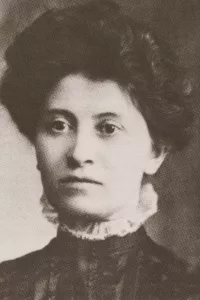The struggle for equal rights between men and women has been, and still is, a long war of attrition against a patriarchal world that seems to have evolved when hunter gatherer communities, who were nomadic, became farmers and the concept of owning land, property and people developed.
Today, in the twenty first century, although tremendous progress for women’s rights has been hard won in most western societies, many laws that were created to ensure equality, such as imposing equal pay, are widely ignored. There is also no doubt that many women worldwide continue to be deprived of their fundamental rights, such as women in Saudi Arabia, who have only been allowed to drive legally since June 2018, allowing them freedom of movement without male supervision.
The modern movement for women’s rights began with the demand for universal suffrage in the United States of America. A few more egalitarian countries had already given the vote to women, but it was rare. In New Zealand, for example, all women were given the right to vote in parliamentary elections in 1893.
The earliest Women's Day, called "National Woman's Day", was held on Sunday February 28, 1909, in New York City, organized by the Socialist Party of America at the suggestion of activist Theresa Malkiel, who was head of the Woman's National Committee of the Socialist Party of America (SPA). This celebration was the immediate predecessor of International Women's Day, which began to develop globally in 1911.

Theresa Serber Malkiel was a Ukrainian-born American labor activist, suffragist, and educator. She was the first woman to rise from factory work to leadership in the American Socialist party. Her 1910 novel, The Diary of a Shirtwaist Striker, is credited with helping to reform New York state labor laws.
Suffragists also challenged gendered dress and behavior and some had hidden bi- or homosexual relationships. The cause embraced diversity and believed in equality for all. While on a speaking tour of the American South in 1911, Theresa Malkiel, called attention to the problem of white supremacism within the Socialist party. She spent her later years promoting adult education for women workers.
There have been claims that the IWD commemorates a protest by women garment workers in New York on March 8, 1857. However, according to academic Temma Kaplan, the French researchers Liliane Kandel and Franqoise Picq wrote in an article for La Revue d'En Face, no. 12 (Fall 1982), Le Mythe des origines a propos de la journée internationale des femmes, that this idea was invented later to: "detach International Women's Day from its Soviet (communist) history, in order to give it a more international origin".
The legal right of women to vote was established in the United States over the course of more than half a century, first in various states and localities, often on a limited basis only allowing widows, spinsters or property owning women to vote, and then nationally in 1920. For the sake of comparison, in Europe women were given the right to vote in France in 1945, in Portugal in 1976, in Moldavia 1993. In The Middle East, Saudi Arabia gave women the right to vote in 2015.
The importance of women’s right to vote is not only a question of individual expression, but it is also a driving force for a fairer society at large. According to a study by John Lott, an American economist and political commentator, titled: How Dramatically Did Women's Suffrage Change the Size and Scope of Government?
"Women's suffrage coincided with immediate increases in state government expenditures and revenue and more liberal voting patterns for federal representatives, and these effects continued growing over time as more women took advantage of the franchise."
In August 1910, an International Women's Conference was organized to precede the general meeting of the Socialist Second International, an organization of socialist and labor parties from twenty countries. At this conference, inspired in part by the American socialists' actions, Clara Zetkin, Käte Duncker amongst others, proposed that "a special Women's Day" be organized annually, although no date was specified at that conference.
The following year on 19 March 1911, IWD was celebrated for the first time, by over a million people in Austria, Denmark, Germany, and Switzerland. In Vienna, women paraded on the Ringstrasse, a boulevard that serves as a ring road around the historic district, and carried banners honoring the martyrs of the Paris Commune, the radical socialist, anti-religious, and revolutionary government that ruled Paris from, 18 March to 28 May 1871. These women demanded that they be given the right to vote and to hold public office. They also protested against gender discrimination in the workplace.
On March 8, 1917, in the capital of the Russian Empire, Petrograd (Saint Petersburg), women textile workers began a demonstration, covering the whole city. Women workers went on strike that day for "Bread and Peace" – demanding the end of World War I, an end to Russian food shortages, and the end of Czarism. This marked the beginning of the February Revolution, which led to the October Revolution and then the Russian Revolution.
The revolutionary leader Leon Trotsky wrote,
"23 February (8th March) was International Woman's Day and meetings and actions were foreseen. But we did not imagine that this 'Women's Day' would inaugurate the revolution. In the morning, despite orders to the contrary, textile workers left their work in several factories and sent delegates to ask for the support of the strike… which led to the general strike... all the workers were out in the streets."
Seven days later, Tsar Nicholas II abdicated, and the provisional Russian government granted women the right to vote.
International Women’s Day remained predominantly a communist holiday until 1967, when it was taken up by second-wave feminists. This term was made popular by journalist Martha Lear in a New York Times Magazine article in March 1968, titled "The Second Feminist Wave: What do These Women Want?". First-wave feminism focused mainly on suffrage and overturning legal obstacles to gender equality, such as the right to vote and to own property. Second-wave feminism broadened the debate to include a wider range of issues: sexuality, family, the workplace, reproductive rights, de facto inequalities, and official legal inequalities.
In the 1970s and 1980s IWD re-emerged as a day of activism. Women's groups were joined by socialist and labor organizations in calling for equal pay, equal economic opportunity, equal legal rights, reproductive rights, subsidized child care, and the prevention of violence against women.
The United Nations began celebrating International Women's Day in 1975, which was promoted as International Women's Year. Two years later the United Nations General Assembly, invited member states to proclaim March 8 as: UN Day for Women’s Rights and World Peace.
In 1996, the UN announced their first annual theme Celebrating the Past, Planning for the Future, which was followed in 1997 with Women at the Peace Table, in 1998 with Women and Human Rights, in 1999 with World Free of Violence Against Women. There is a new theme each year, which, while admirable for its intentions, seems to have little effect on entrenched inequality.
Since the 1990s until recently, there was less activism on International Women's Day in most countries. Many women did not and do not want to be labelled as feminist, believing perhaps that feminism is synonymous with misandry and that our rights, once won, are inviolable. Nothing could be further from the truth.
In 2001, the internationalwomensday.com platform was launched with the specific purpose of re-energizing IWD and of celebrating and making visible the achievements of women, while continuing the call for accelerating gender parity.
The website, which provides useful guidance and resources, adopts an annual campaign theme that is globally relevant for women’s groups and organizations. The theme, one of many around the world, provides a framework and direction for annual IWD activity and takes into account the wider agenda of both celebration, as well as the call to action for gender parity.
Article 21 of the Universal Declaration of Human Rights, proclaimed by the United Nations General Assembly in Paris, on 10 December 1948, recognizes the right of every person to take part in the government of his or her country.
In the introduction to an Expert Group Meeting in 2005, the UN Division for the Advancement of Women (DAW) stated:
“Equal access of men and women to power, decision-making and leadership at all levels is a necessary precondition for the proper functioning of democracy. Equal participation of men and women in political affairs makes governments more representative of the composition of society; it makes them more accountable and transparent, and ensures that the interests of women are taken into account in policy-making. Women, however, have traditionally been excluded from power and decision-making processes.”
And yet sixteen years on, gender parity “at all levels of decision-making and leadership” continues to be disrespected and difficult to obtain.
The IWD website also serves as a significant vehicle for charities and in 2020 a hefty six figure sum was raised with 100% of donations going to charity.

If you are in any doubt as to the modern relevance of International Women’s Day, the causes that the organization defends and the need for continued activism, I invite you to read The Handmaid's Tale by Canadian author Margaret Atwood (1985), or to watch the excellent television adaptation. You will notice parallels with recent worldwide events and law making.
In this dystopian novel, set in the near-future in New England, a pseudo Christian patriarchal and totalitarian state comes to power. After a supposed terrorist attack, that was in fact staged, the President of the United States and most of Congress, are killed. The United States Constitution is suspended, newspapers are censored, and what was formerly the United States of America becomes a military dictatorship known as the Republic of Gilead.
The perceived threat in the story of further terrorist attacks, allows the mainly male revolutionaries to revoke basic human rights and throw women back into a state of domestic and sexual slavery. Until the number of women in positions of power, decision-making and leadership is greater than the number men, our fundamental rights are not inviolable.




